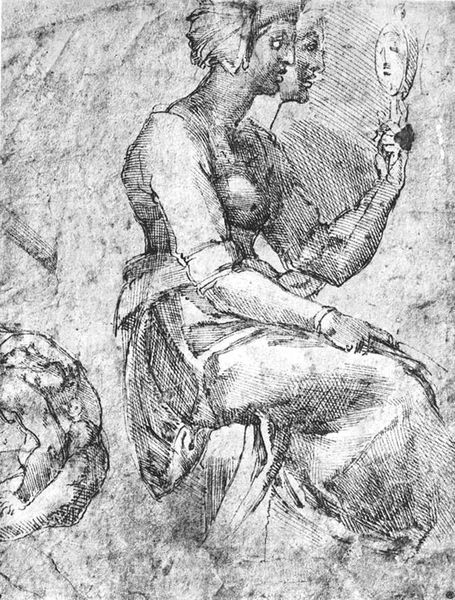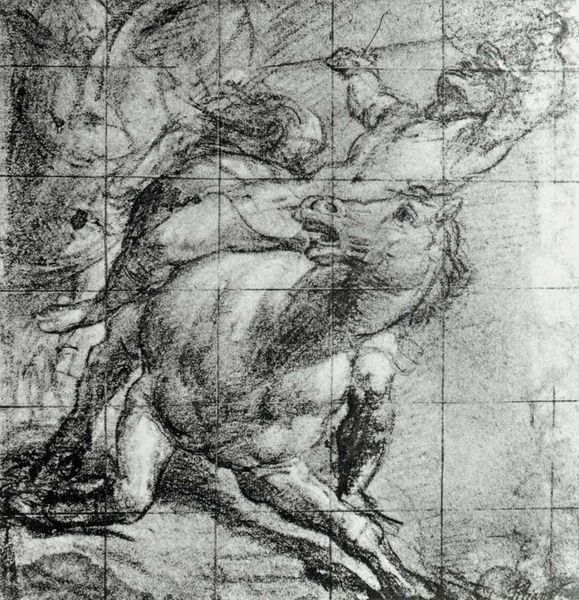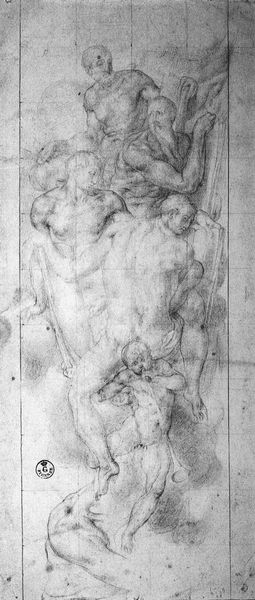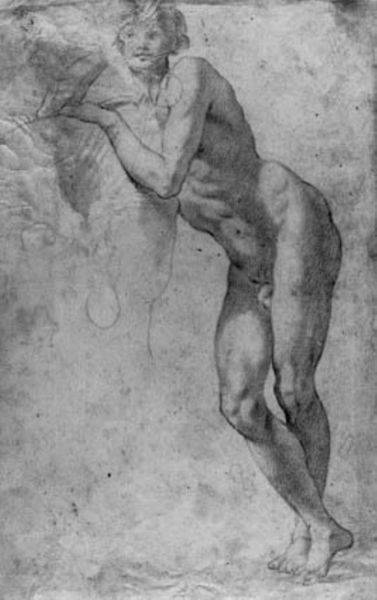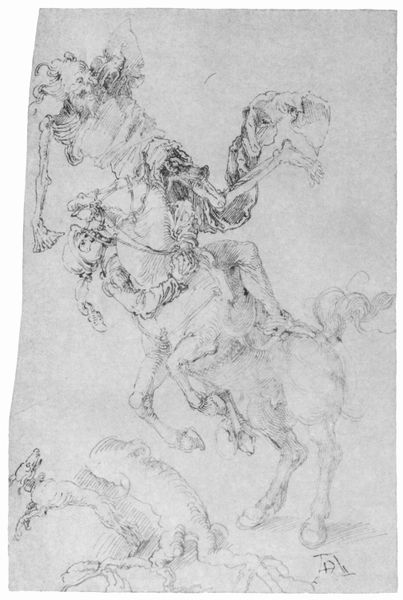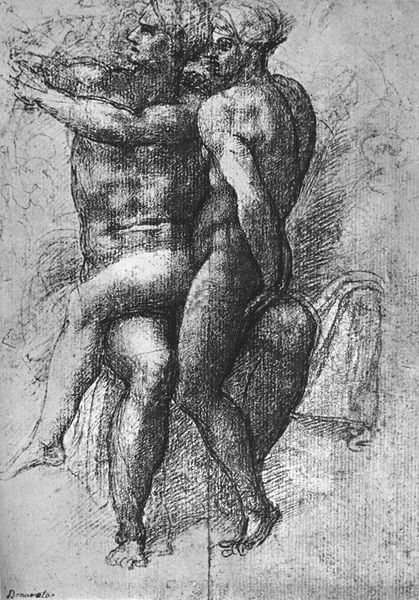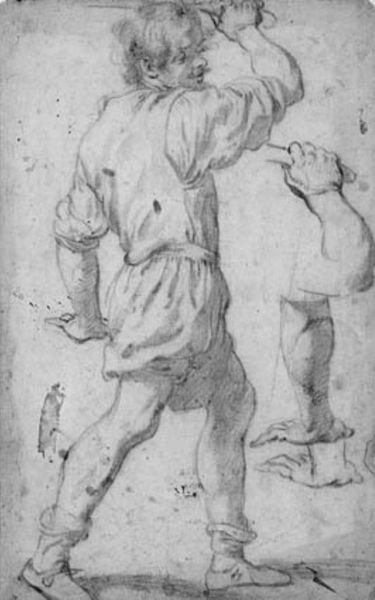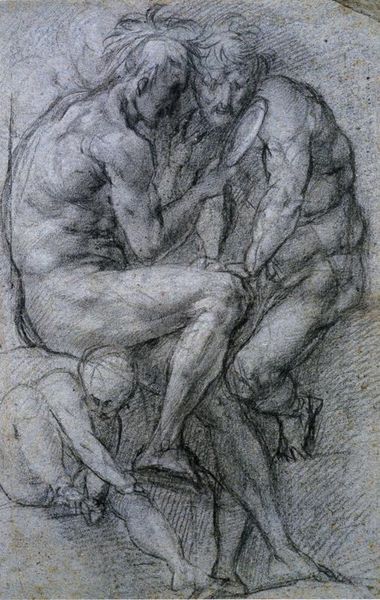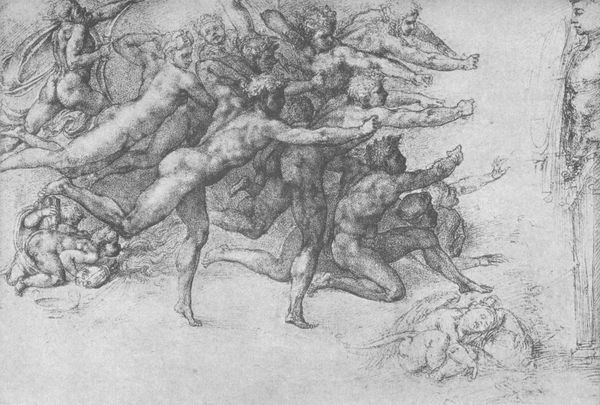
drawing
#
portrait
#
tree
#
drawing
#
amateur sketch
#
animal
#
pencil sketch
#
incomplete sketchy
#
charcoal drawing
#
charcoal art
#
male-portraits
#
sketchwork
#
detailed observational sketch
#
sketch
#
horse
#
rough sketch
#
charcoal
#
graphite
#
monochrome
Copyright: Public domain
Curator: So, before us, we have Titian's "Cavalier over a Fallen Adversary," a charcoal drawing from 1564. Editor: Whew! Immediate impression? Overwhelming energy, a vortex of conflict captured in charcoal dust. It feels unfinished, raw... but compellingly so. Curator: Precisely. The unfinished nature gives us insight into Titian's process. This drawing reflects the cultural norms of the time and raises interesting questions when we see this as something possibly related to class power and political control. What power dynamics are we seeing? Editor: Okay, I'm seeing the obvious victor here on horseback, this dominating figure, right? But the rough, sketch-like nature makes him feel less...godlike. It’s not glorifying war—maybe just observing, you know? Capturing a fleeting moment of conquest without judgment. It looks, somehow, very Italian. Curator: It resonates with those historical intersections of class, nobility, and violence. But also, what does this study tell us about Titian's exploration of the male figure in art, especially regarding aggression? Editor: Good point. This isn't some polished heroic ideal. It's messy, dark. He even appears terrified. This contrasts pretty violently with those triumphant equestrian statues meant for pure propaganda, and shows us his feelings may not be quite in line with what the Church was pushing. This one just feels human. Like he just did this thing because someone said, "Hey, do it this way!". You know, for money! Curator: These economic structures impacted artists, informing their output. How much agency did they really have? Editor: It’s interesting to consider this almost 500 years later. Does the “winning” cavalier feel less triumphant because his victory came at a cost of moral character, social approval, and cultural values? He's powerful, yes, but something about this makes me like the loser, who's presumably now just on a peg leg down by the sea. Curator: By examining art as embedded in specific moments, we begin to question who gets to tell the stories of these moments, and what power that storytelling holds. Thank you for giving us your creative perspectives today, it really fleshes out what could be an interesting topic about control. Editor: My pleasure. A charcoal swirl of ambiguity, for sure—thanks for sorting through it.
Comments
No comments
Be the first to comment and join the conversation on the ultimate creative platform.
